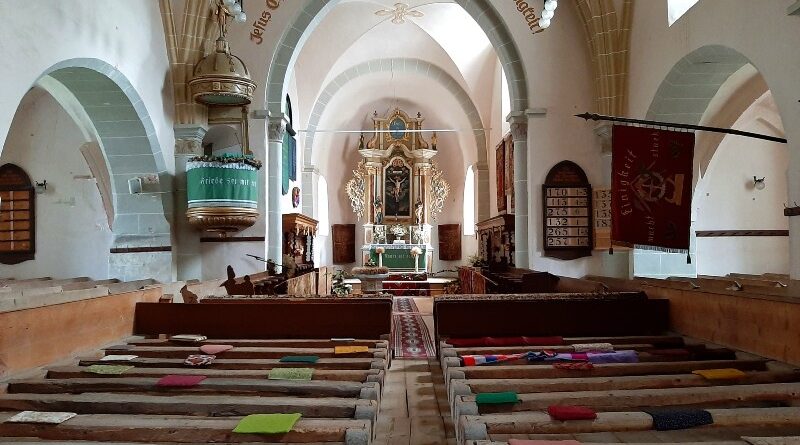The Fortified Church of Harman (Honigberg), Brasov County
In this trip report, we make a half-day trip from Brasov to the Saxon fortified church of Harman (Honigberg).
Visiting Brasov
The city of Brașov is one Romania’s most popular destinations for foreign tourists and it is easy to see why.
The old town of Brașov is gorgeous and has a decidedly Central European feeling to it as it was founded by German settlers in the Middle Ages.
It also has a beautiful mountain backdrop, making it one of Romania’s most picturesque cities.

Brasov day trip
Many tourists use Brașov solely as a stopover point between Bucharest and other destinations in Transylvania.
This is a shame, as there is a lot to see in the direct environment of the city.
One easy half-day trip from Brașov brings you to the Saxon fortified churches of Hărman and Prejmer. Both are amazing places to visit at any time of the year.
Hărman
From Brasov, it is a short 15 minutes drive to cover the 10 kilometres to the fortified church of Harman.
When I was visiting Harman’s fortified church in late October, it was quite foggy on the road and visibility was low.
These morning mists are quite common in this part of Transylvania due to the Carpathian mountains to the south abruptly giving way to the Transylvanian plateau.
Although such fog might not be the best for great vistas, it does create a mystical atmosphere which combines oh so brilliantly with these Medieval fortified churches.
Besides the church, there is not much else to see in Hărman, a town of under 5,000 inhabitants.
The town centre does however look quite neat and has a small supermarket as well as some banks and a bar if you might require them.
Right next to the fortified church there are plenty of places where you can park your car.


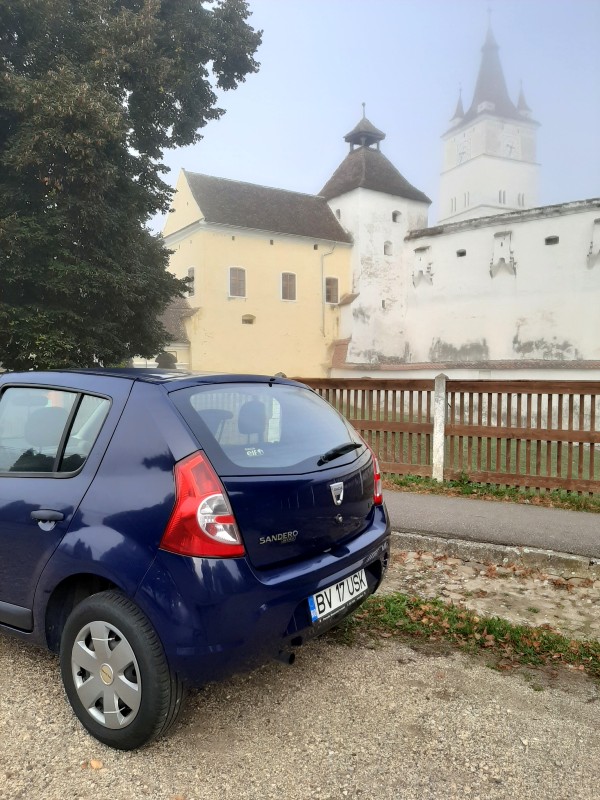
Hărman fortified church
With its high white walls and multiple towers, the fortified church at Hărman looks quite impressive from the outside.
Just like most other fortified churches in Transylvania, the wall is circular and has one gatehouse from where you can enter the compound.
There is a minor entrance fee of 10 lei (2 euro) which you have to pay in the office immediately to the left at the end of the entrance tunnel.
Inside the cosy room, where a cute cat was napping on a pillow, an amazingly friendly lady handed me an information leaflet and explained a bit about the history of the church.
It turned out that she was actually a Transylvanian Saxon herself, which was great for me as I could switch from my basic Romanian to my much more fluent German language skills.
Just like other Transylvanian towns there aren’t many Transylvanian Saxons remaining in Hărman.
At the 2011 census, only 1.2% of the citizens identified as ethnic Germans.
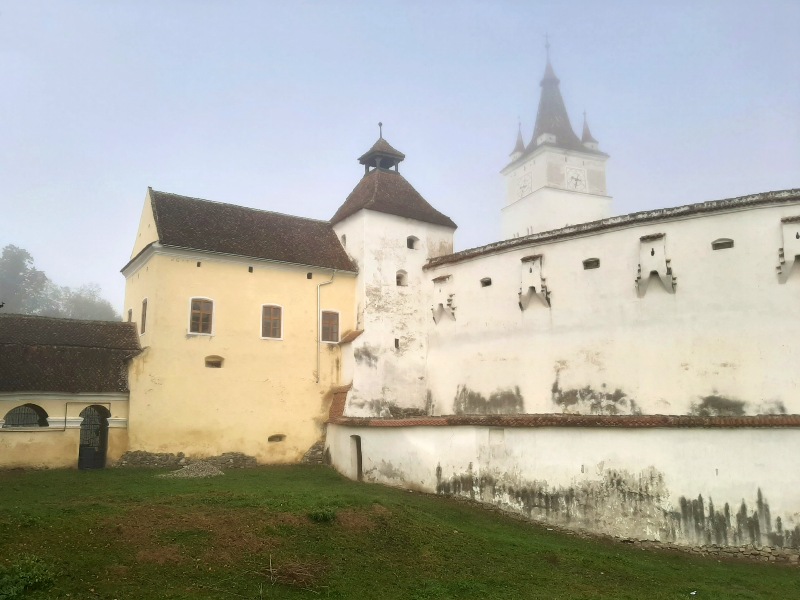


Hărman history
If you want to read more about the general history of the ethnic German community in Romania and about the reasons why these fortified churches were constructed, I recommend you to read the introduction chapter about the Saxon fortified churches of Transylvania first if you haven’t done so yet.
In 1211, King Andreas II invited the Knights of the Teutonic Order into his domain to construct fortresses and help defending his realm against marauding Cumans, a Turkic nomadic people which made frequent incursions into south-eastern Romania.
In return, the Teutonic Knights were granted lands around Brasov and were allowed to bring German settlers into Transylvania. Together, these Germans founded multiple towns and villages throughout the area.
One of these towns was Hărman, which in German is called Honigberg.
The Teutonic Order was expelled later that century after a disagreement with the king, but the German settlers were allowed to remain in the area.
When King Bela IV succeeded his father Andreas, he granted the Cistercian Order patronage over the churches in Honigberg and Prejmer. In 1290, the Order began to fortify the church of Honigberg.
Expanding the church
One of the first things the Order and the locals started to work on was strengthening the wall. In total three defence walls were built, with the inner wall being raised to 12 metres in height. At its base, the massive wall is 4 metres thick.
There are countless of loopholes in the walls for bowmen to fire their arrows at approaching enemy soldiers. Seven wall towers, each of them four stories high, provided further protection.
The total circumference of the walls is 430 metres, making it one of the biggest fortified enclosures of all Transylvanian Saxon churches.
A moat surrounding the wall was dug as well by the Saxons, although this is no longer visible as it was filled up in 1814.
A smaller third wall which used to surround the moat was also destroyed.
What you see now are therefore just a fraction of all the fortifications that once existed, although the walls and towers still look absolutely formidable.

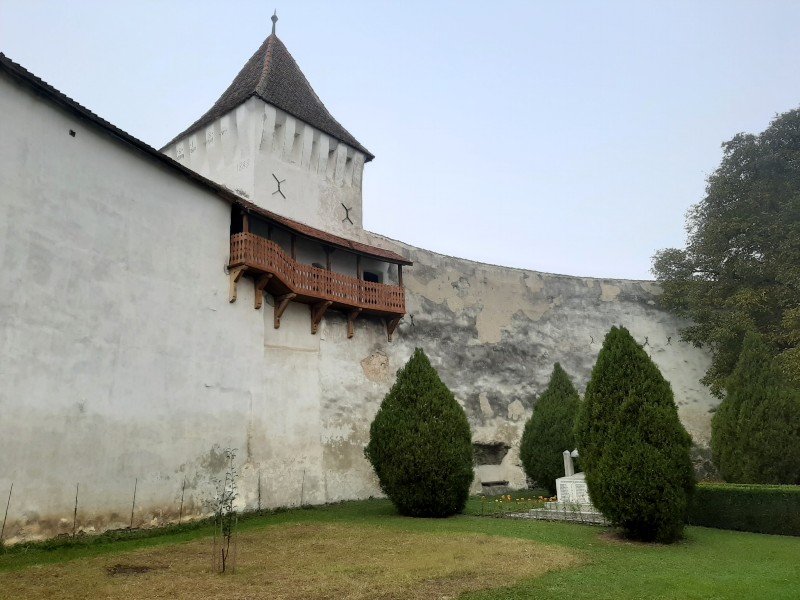
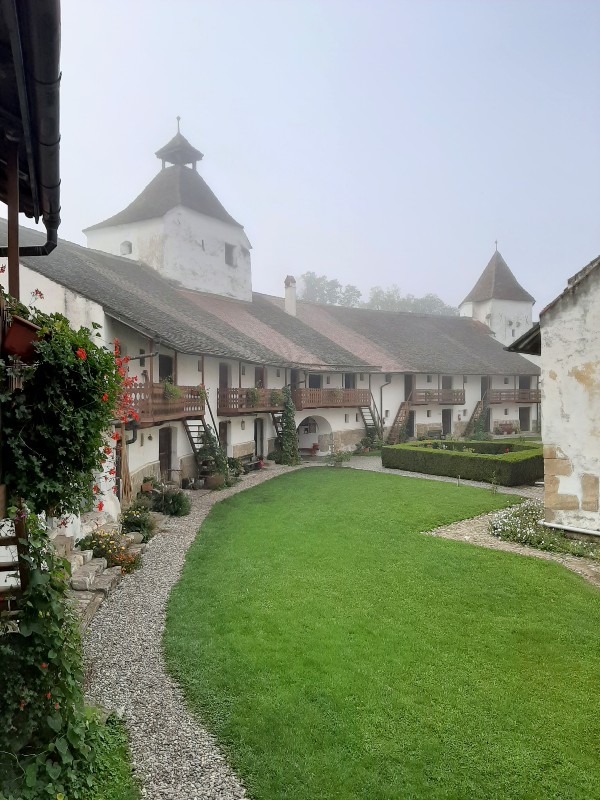
Fortifications
You can walk into some of the towers and inner allures of the fortified church to get a feeling how life must have been for the knights who had to defend Harman.
The Honigberg locals managed to turn their church into such an impressive fortress that not a single enemy force managed to take it.
In 1552, the great Moldovan prince Ștefan Rareş unsuccessfully tried to take the fortified church.
In 1600, the Prince of Wallachia Mihai Viteazul (Michael the Brave) failed as well to besiege the church.
Would the Hungarians then manage to take it? Nope, in 1612 Prince Gabriel Bethlen also failed to take Hărman despite his best attempts besieging Honigberg with a 7,000-strong army.
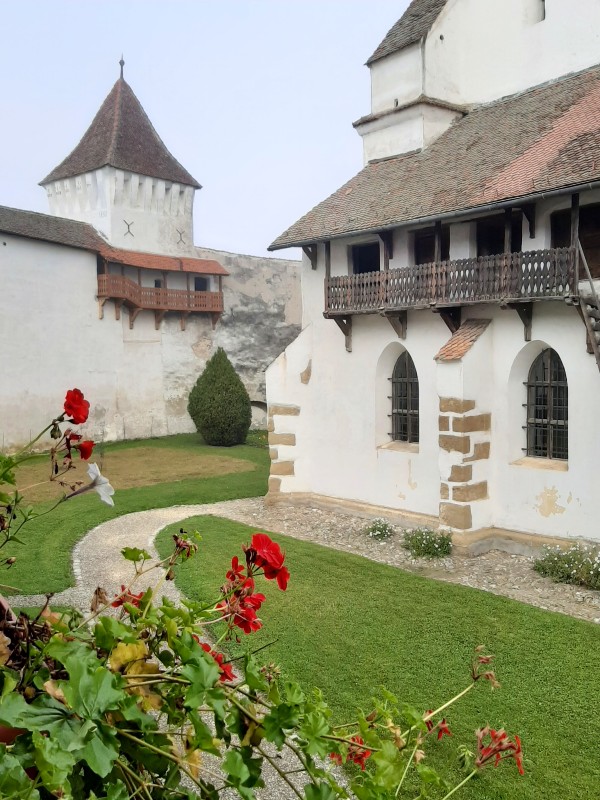

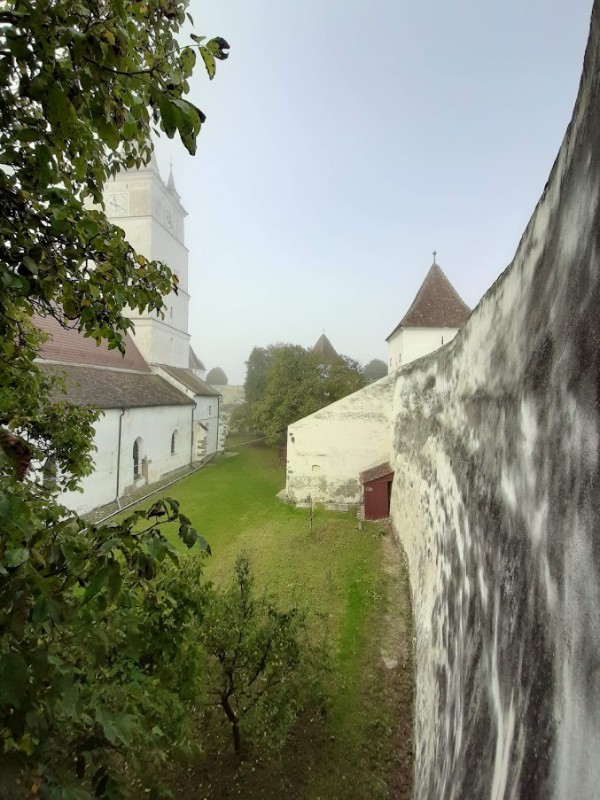


Eastern tower
By far the most interesting of all the fortifications is the eastern tower, which has an amazing 15th century chapel with beautiful frescoes painted all over the walls.
The paintings depict the Last Judgement and are unique for a Transylvanian Saxon church.
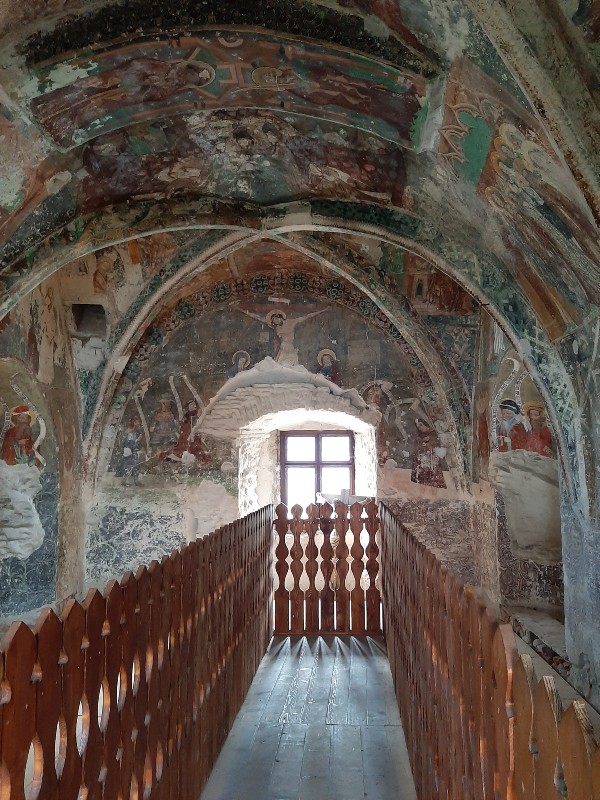

Bell tower
From the wall-walk, you also have a great view back over the inner compound and the magnificent church in the middle.
The Hărman fortified church was originally built in Romanesque style, but was later remodelled into a Gothic style church in the 15th century.
The bell tower is the epicentre of the Hărman fortified church. It has eight floors measures 52 metres, making it the tallest fortified church tower in the wider Brașov area.
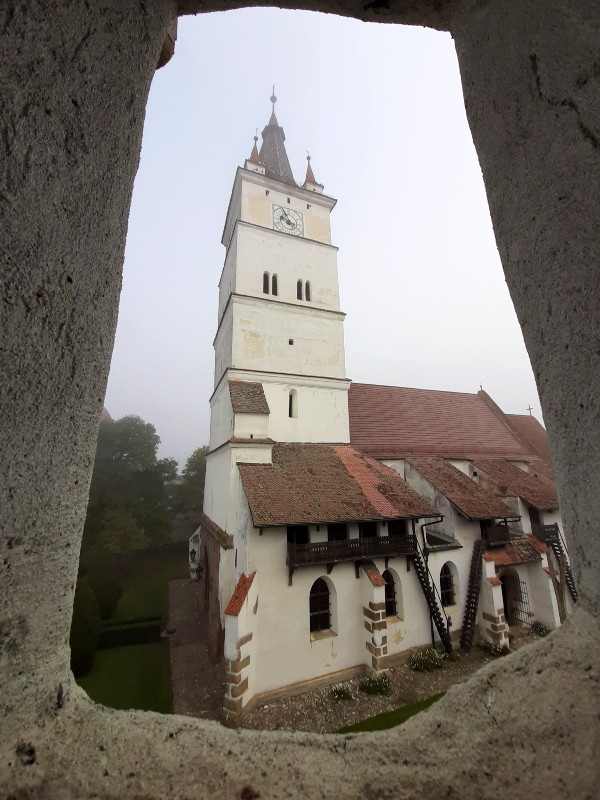
Memorial
In front of the church tower, you can find a large bell which acts as a memorial to the Saxon villagers of Hărman who were killed in the Second World War.
As in so many other Saxon towns, many young men volunteered to take up arms for the Nazis out of a false sense of ethnic pride and duty – a bad choice which would eventually have disastrous consequences for these Transylvanian Saxon communities as well.
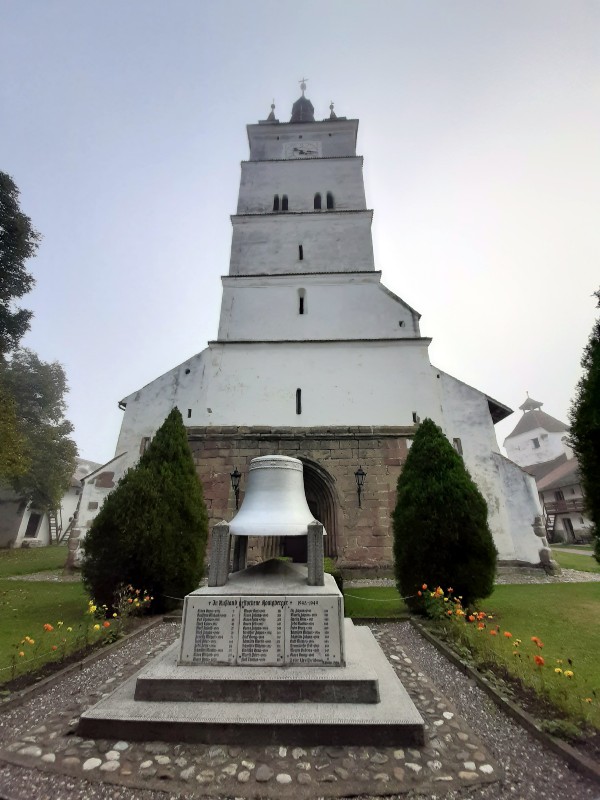
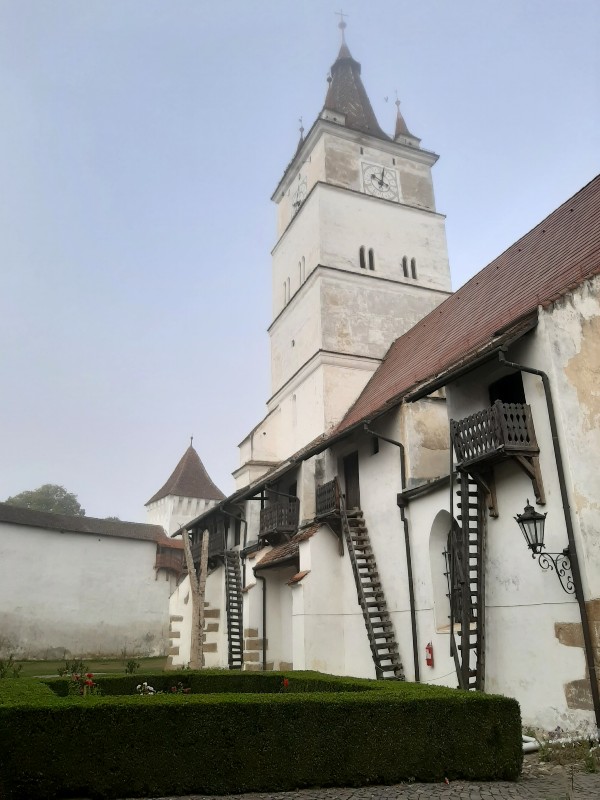
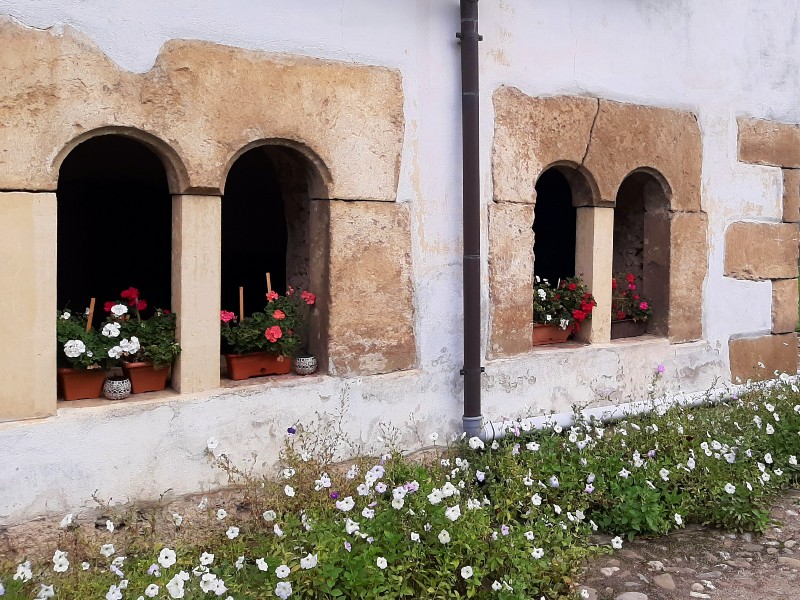
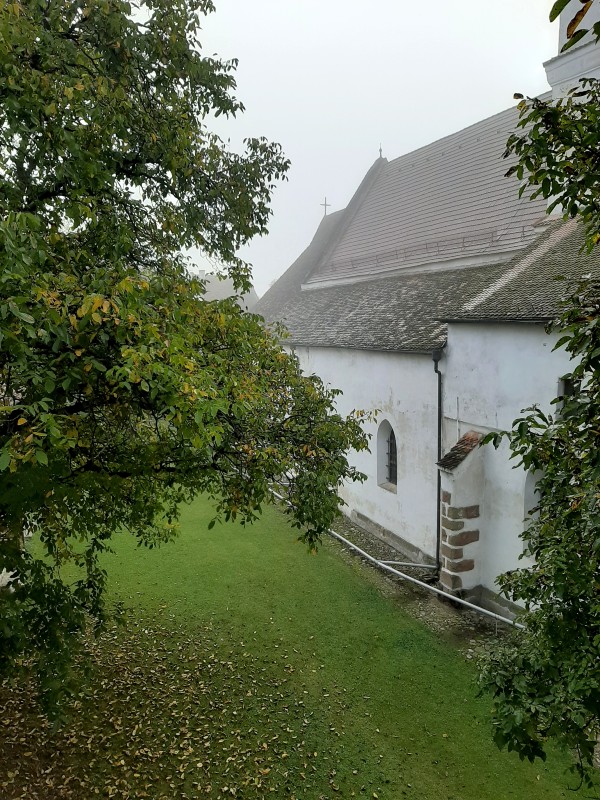
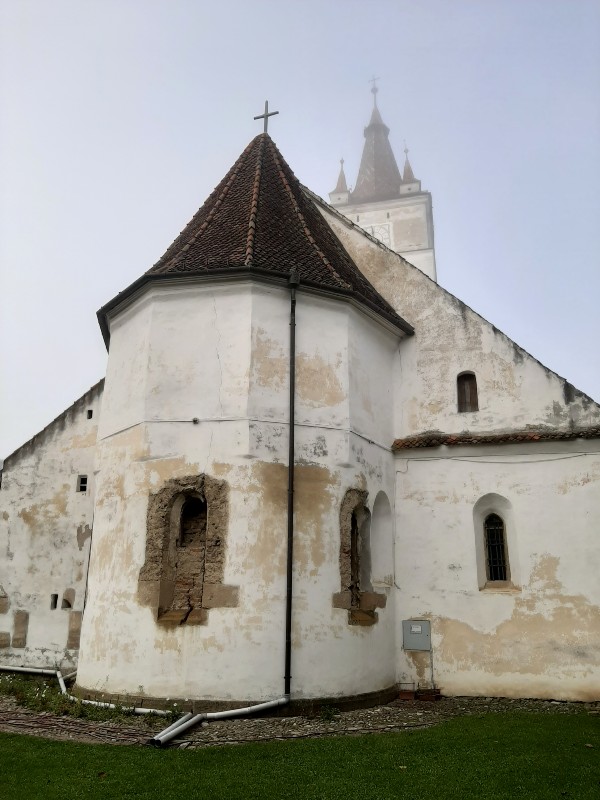
Inside the church
The church itself has to be one of the nicest I have seen to date in all of Transylvania.
The interior is a weird blend of different styles, as it mixes some Romanesque and Gothic elements with a Baroque altar.
Added into the mishmash are some down-to-earth peasant objects such as pillows, blankets and carpets, which created incredibly cosy and warm surroundings.
The church also has its own organ, which was made in 1795 in Brasov by Johannes Prause, an organ builder whose pipe organs were used in churches all over Transylvania.
I however especially liked the wooden church benches, some of them with colourful hand-made pillows and blankets put on them.
The Transylvanian Saxons were always known to be ‘bürgerlich’ as they would call it in German, taking great care of the lands, houses and churches in their community.
This was perfectly on show at the fortified church of Hărman.
The entire compound is certainly well-maintained judging by the mown grass outside and some autumnal decorations in and around the church.




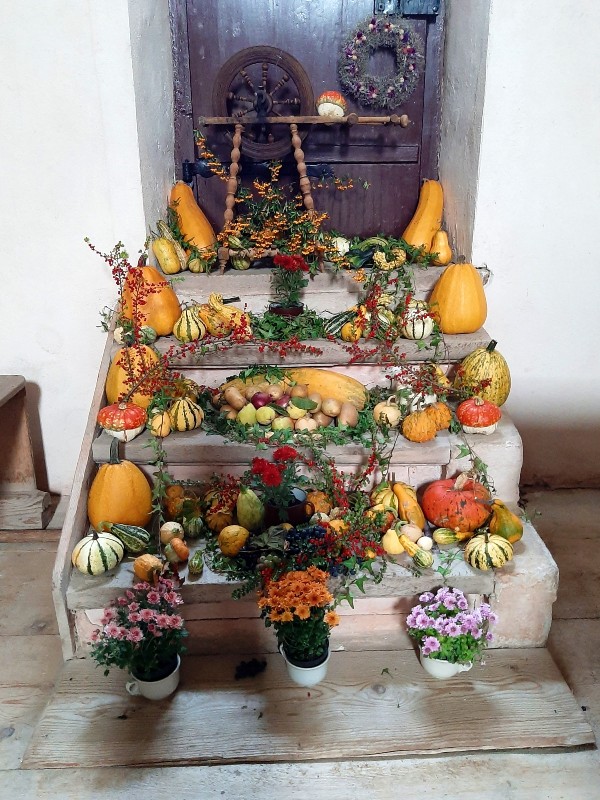
Climbing the church tower
It is possible to climb up into the church tower all the way to the bells eight floors up. It is a fun climb on some old wooden ladders, so watch your steps carefully!


A look into the old Saxon life
Hărman’s fortified church is also somewhat like a small museum as most of the rooms in the old houses along the inner wall are now used to showcase historical artefacts.
These rooms were used in the past to house not only the local garrison, but also the citizens of Hărman in times of war. Important dignitaries such as the mayor and pastor each had their own house, while others had to share their accommodation.
Other rooms were used as storage spaces, granaries, workshops and even as a school classroom.
The old interiors of some of these rooms have been painstakingly restored into their former glory, while other rooms are now used to exhibit traditional clothes, toys and furniture.

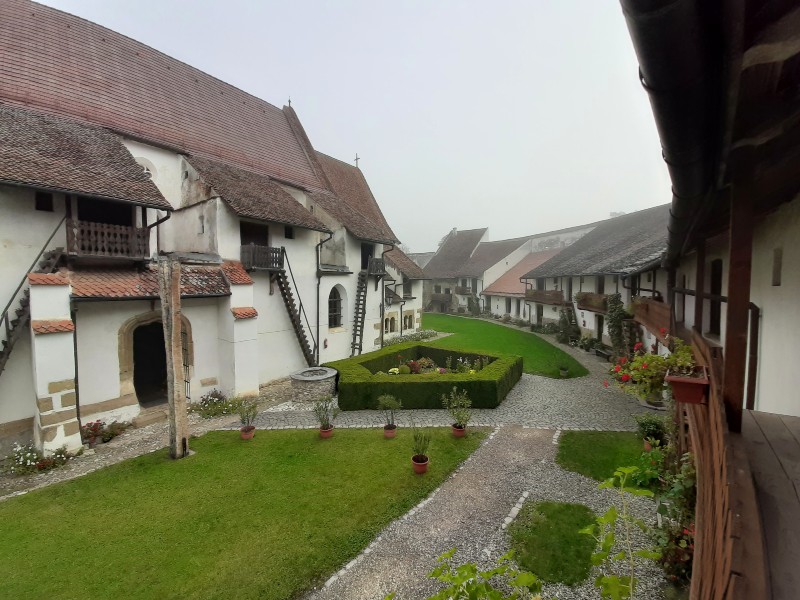
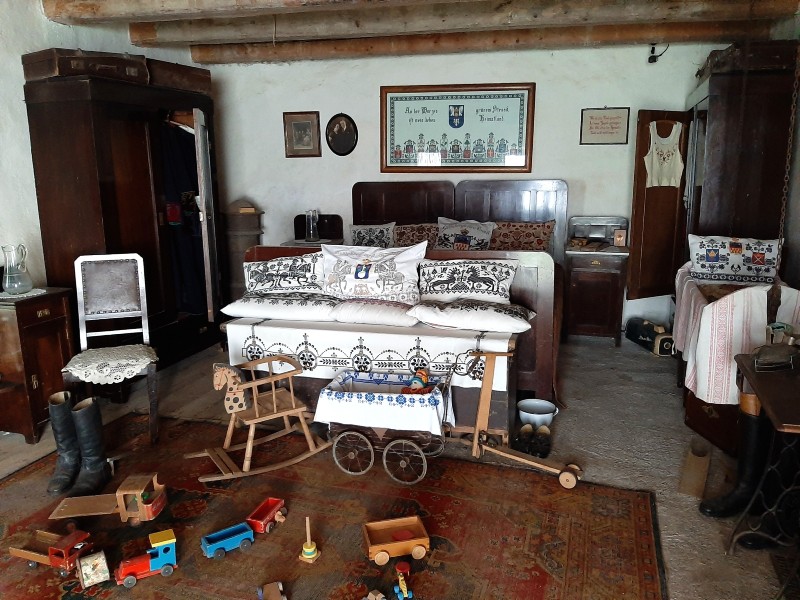


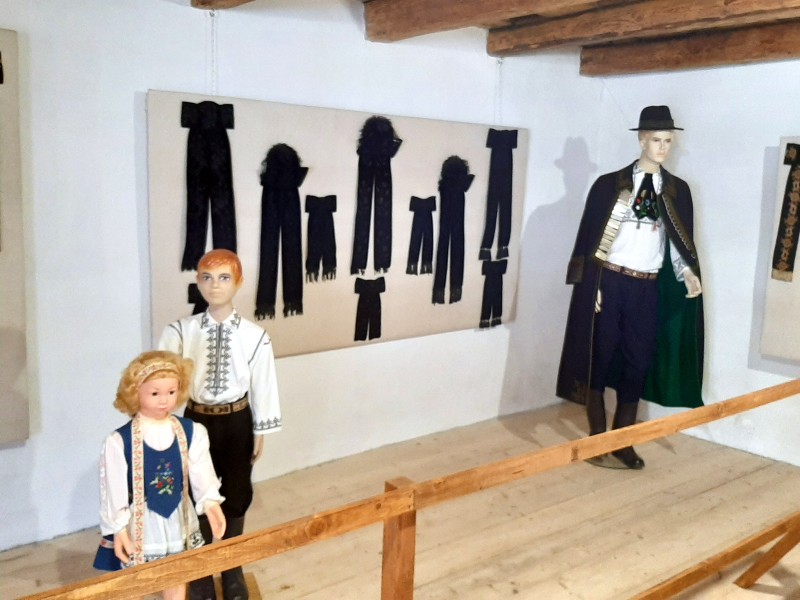

Conclusion
The fortified church of Hărman is an absolute delight to visit.
The entire complex is lovingly taken care of by the local Transylvanian Saxon community, who take pride in their cultural heritage.
The church certainly impressed me, as the interior mixed a lot of different styles and had a warm, down-to-earth peasant-like vibe.
Apart from the church itself, I’m quite sure that each single visitor will enjoy exploring every nook and cranny of the walls, towers and fortifications, as well as learning more about the Transylvanian Saxons by viewing all the exhibits.
I was even more lucky to see the church in a thick layer of morning fog, which really created an even more mystical atmosphere around these old fortifications.
If you find yourself in Brașov, I can highly recommend to make a visit to this wonderful fortified church. You won’t regret it!
How to reach Hărman?
Hărman is incredibly easy to reach by car as you just have to follow the DN11 out of Brașov by following the signs towards Sfântu Gheorghe and Bacău.
Some ten to fifteen minutes out of Brașov, the turn-off to Hărman is on your left-hand side. The fortified church of Hărman is in the middle of town – you can’t really miss it!
It is also possible to reach the fortified church of Harman by public transport. Hărman is a stop on the Brasov – Sfântu Gheorghe and Brasov – Întorsura Buzăului railway lines.
Trains are operated by both the national railway company CFR Călători as well as privately owned Regio Trans. Harman’s train station is located at the outskirts of town some 25 minutes away on foot from the fortified church.
It will however almost certainly be easier to take a frequent bus from one of Brasov’s bus stations or stops right into the town centre of Harman. Autogari.ro has a good overview of the available options and timetables.
Going by taxi is another realistic alternative, although you may have to negotiate a decent fare before you set off.
Prejmer
From Harman, the fortified church of Prejmer is just 8 kilometres away, making it logical to combine both churches in a (half) day trip from Brasov.
There are highly limited, very irregular buses between the town centres of Harman and Prejmer. That said, if you walk to the bus stop on the main provincial road (DN11) just outside of town, you will find a regular bus service to Prejmer.
You can also get a taxi or train to cover the stretch between Harman and Prejmer. Prejmer’s train station is named ‘Ilieni’ and is one stop further down the line than Harman on the Brasov – Sfantu Gheorghe railway.
From Prejmer, travelling back to Brasov is again very straightforward as there are frequent buses and a handful of trains.
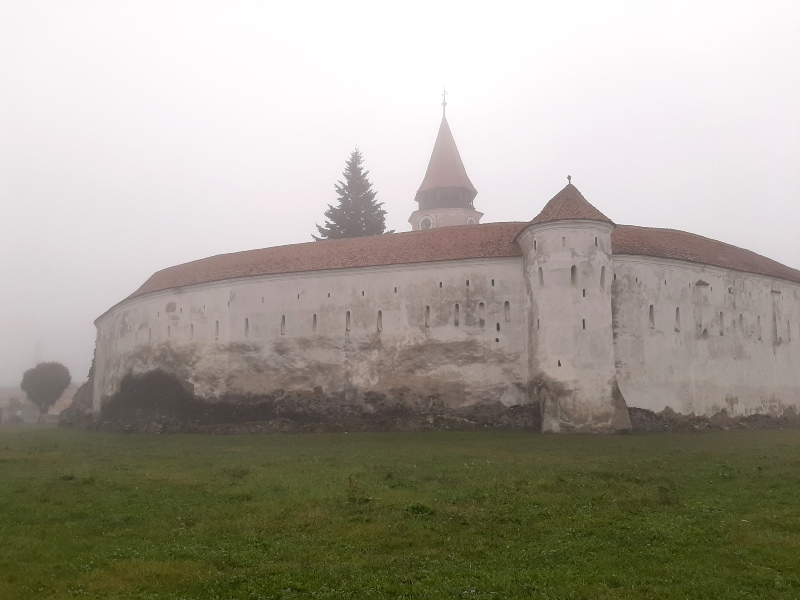
Trip report index
This article is part of the ‘Visiting the Saxon Fortified Churches of Transylvania‘ trip report, which consists of the following chapters:
1. The Fortified Church of Harman (Honigberg), Brasov County (current chapter)
2. The Fortified Church of Prejmer (Tartlau), Brasov County
3. The Fortified Church of Feldioara (Marienburg), Brasov County
4. A Visit to Rupea Fortress
5. The Fortified Church of Homorod (Hamruden), Brasov County
6. Racoș: Exploring an Extinct Volcano and Abandoned Castle
7. In the Footsteps of King Charles: A Visit to Viscri, Romania
8. A Visit to the Fortified Church of Viscri, Brasov County
9. A Night Walk Around the Citadel and Old Town of Sighisoara
10. Review: Hotel Casa Wagner, Sighisoara, Romania
11. The Fortified Church of Saschiz (Keisd), Mureș County
12. The Fortified Church of Cloasterf (Klosdorf), Mureș County
13. The Fortified Church of Mesendorf (Meschendorf), Brasov County
14. The Fortified Church of Crit (Deutsch-Kreuz), Brasov County
15. The Fortified Church of Biertan (Birthälm), Sibiu County
16. The Fortified Church of Hosman (Holzmengen), Sibiu County
17. Review: Brukenthal Palace Hotel, Avrig
18. A Visit to Sambata de Sus and the Brancoveanu Monastery
19. Into the Carpathians: A Beautiful Drive to Moieciu de Sus

